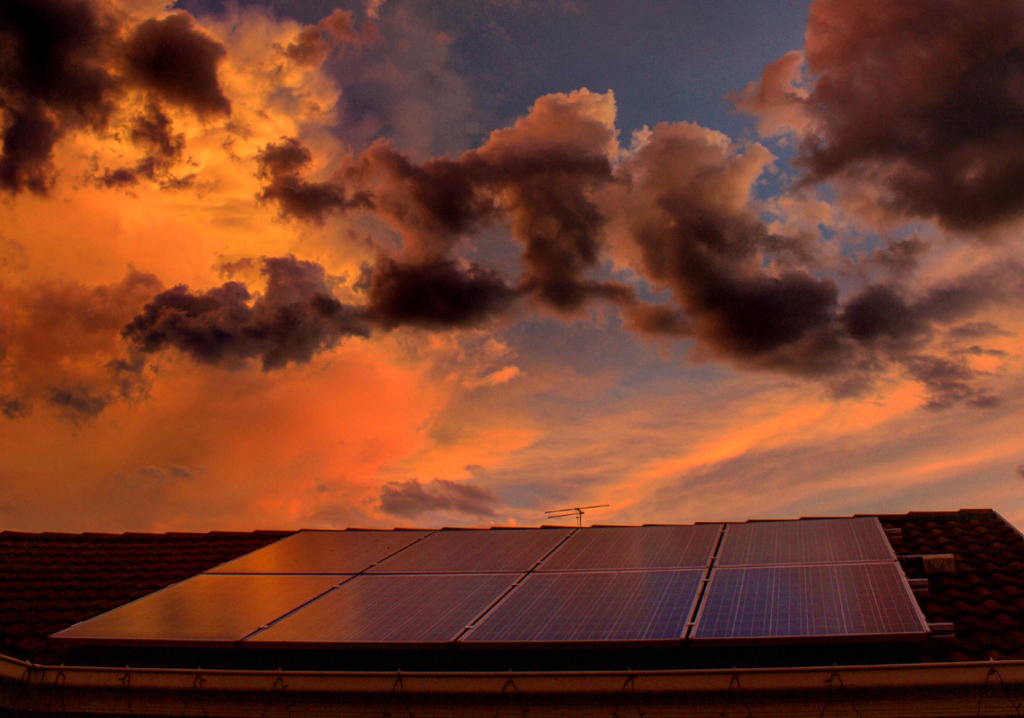The country leads the world in the adoption of solar energy, but what happens when essential national infrastructure becomes a consumer commodity?
Australia leads the world in the adoption of solar energy. The installation rate of residential rooftop panels is ten times the global average.
Since the 1990s, more than 3.3 million homes have had photovoltaic (PV) systems fitted. That equates to more than 80 million panels.
Good intentions are driving this investment.
“Photovoltaic is the most popular renewable energy source,” said Deakin University materials researcher Dr Md Mokhlesur Rahman. “The reasons are simple. It can produce very clean electricity. It can produce low-cost electricity. And, once installed, there is no maintenance cost.”
But PV cells also present a paradox. They’re disposable, like computers, televisions and mobile phones — but on a far larger scale.
And that’s put Australia at the forefront of a new solar e-waste problem.

“Electricity generation has gone from an industrial model to a general public model,” John Polhill, Sustainability Victoria manager of infrastructure partnerships, told create. “In doing so, the nature of the generator has changed. It’s now a consumable.”
The International Renewable Energy Agency estimates that Australia will have to contend with 450,000 t of used panels by 2040.
The first wave is already upon us, with “early adopters” discovering their units are reaching the end of their advertised 25-year lives.
Adding to the problem are panels damaged in transit, installation and extreme weather. According to the University of Sydney, up to 90 per cent of these are currently being smashed and dumped as toxic landfill.

“National solar recycling has been listed as a key environmental priority for the Australian government for the past seven years,” said Associate Professor Penelope Crossley of the Sydney Law School.
“However, there is still no national legal framework to address the end of life of solar panels.”
But, behind the scenes, Australian industry and researchers have been chipping away at the problem. And they think they’re on the brink of finding a commercially viable means of recycling them.
“The photovoltaic cell was created here in Australia by one of our partners, the University of New South Wales,” said Richard Petterson, CEO of Adelaide-based panel manufacturer Tindo Solar. “They couldn’t attract the right sort of investment, so they went overseas. Hopefully, we can do better this time around.”
A full life
On average, a good-quality solar panel will lose about half a per cent of its productivity each year. The generally accepted threshold for replacement is 80 per cent, which should happen about 25 to 30 years after installation.
While a solar panel’s protective tempered glass can get scratched or decolourised, the leading cause is the constant cycle of heat and cold, along with the buffeting of wind that gradually delaminates the layered components within the PV cell itself.
Solar panels are designed to be incredibly robust, said Anthony Vippond, co-founder of e-waste recycler Lotus Energy.
“They have to survive tough conditions, and that’s because they have high-voltage DC running through them while sitting on top of somebody’s house,” he explained. “Then, when you take them off the roof, everybody complains that they’re so difficult to break down. The reality is that’s a necessary evil of the product.”
But panels are coming off roofs faster than anticipated. Some are recording lifespans as low as seven to 10 years. It’s partly a consequence of a consumer mentality, said Petterson.
“When people buy a house and decide to renovate, that often includes updating the solar system,” he said. “Or they don’t want mismatched panels if they want to expand.”
Then there are those who re-roof.
“The current regulations around solar panels mean that once they come off, we can’t put them back on. So that’s potentially another reason why lifespans are lower than expected,” Petterson added.
“But the biggest underlying cause is just poor manufacturing and poor handling leading to early delamination.”
Recycling challenge
The Australian Renewable Energy Agency (ARENA) puts the cost of recycling a solar panel at $29. That’s six times as much as sending it to landfill.
Extracting enough value to overcome this difference is not a problem unique to solar recycling. But PV cells are particularly resilient. The inverter, cabling and structural frames are all fed into existing recycling schemes.
What’s left over is mostly glass that contains film-like minerals coated — doped — with toxic materials to improve their efficiency.
“The PV panel is only five per cent highly valuable silicon,” said Rahman. “Maybe 75 per cent is tempered glass, 10 per cent polymer — encapsulant and back sheet foil — eight per cent aluminium and about two per cent are other elements — cadmium, lead, chromium, selenium, boron, silicon nitride.”
In landfill, those heavy metals could mix with soil and water.
“And that means it can contaminate groundwater, which poses health risks to humans and wildlife,” Rahman said.
Polhill said the difficulty of extracting silicon and glass of sufficient quality means most panels end up crushed or stockpiled.
“People have in the past said, ‘We recycle solar panels.’ But when you delve a little bit further, they just take the frame off,” he said. “That’s not recycling. That’s just stripping off the valuable piece and landfilling the rest.”
But overcoming the resilience of PV cells takes effort and energy.
“There is pyrolysis or thermal treatment, but that puts carbon in the glass and devalues it,” Polhill said. “It can be crushed and screened as a sand additive. I know there are trials using it in pavement. But that’s a value-loss situation. It’s downcycling.”
Rahman, with Professor Ying (Ian) Chen at Deakin University, is exploring new technologies to separate the cells, purify the material, and turn them into high-value nano silicon. But none are yet commercial.
“We’re at that tipping point where whoever brings to market something viable in the next two to four years will certainly become a market leader,” Polhill said.
Sustainable solutions
Engineered resilience is a PV cell’s greatest asset, as well as its greatest curse. But it may also be part of the solution.
“The great thing about solar panels is they’re pretty inert,” said Polhill. “They store and stack nicely and do not need to be undercover. And when dismantled, risk of fire in stockpiled material would be low.”
That means the material can be amassed both in anticipation of better recycling technology and to reach a commercially viable scale.
But while a consumer might find a fall to 80 per cent of original output unacceptable, that PV cell remains perfectly functional, with probably another decade or two of useful life left in it.
“We’ve made the effort to get all those minerals out of the ground and turn them into usable elements, and that’s where most of the carbon investment is,” Petterson said. “So the best outcome is to get the maximum possible use out of it.
Repurposing cells is a technical, legal and legislative challenge. They are, after all, powerful electronic devices. And Polhill said re-use schemes can be abused as a means of exporting the waste problem.
“They shouldn’t be sent offshore,” he said. “But it’s a perfect opportunity to decentralise power for remote and low socio-economic communities.”
Space isn’t a problem in the outback, he adds, meaning a need for more panels to reach the same output isn’t a significant concern.
Meanwhile, the Australian government is preparing to legislate a product “stewardship” scheme to pay for solar waste collection, similar to those for computers and televisions.
“You’ve used the system. That system is now no longer adequate, so you’re buying a new one,” Polhill said. “And then you’re asked to pay to dispose of the waste as well. That’s not in our consumer instincts.
“But if you internalise the cost in the purchase price, that money is already in the system for when that product reaches end of life.”
